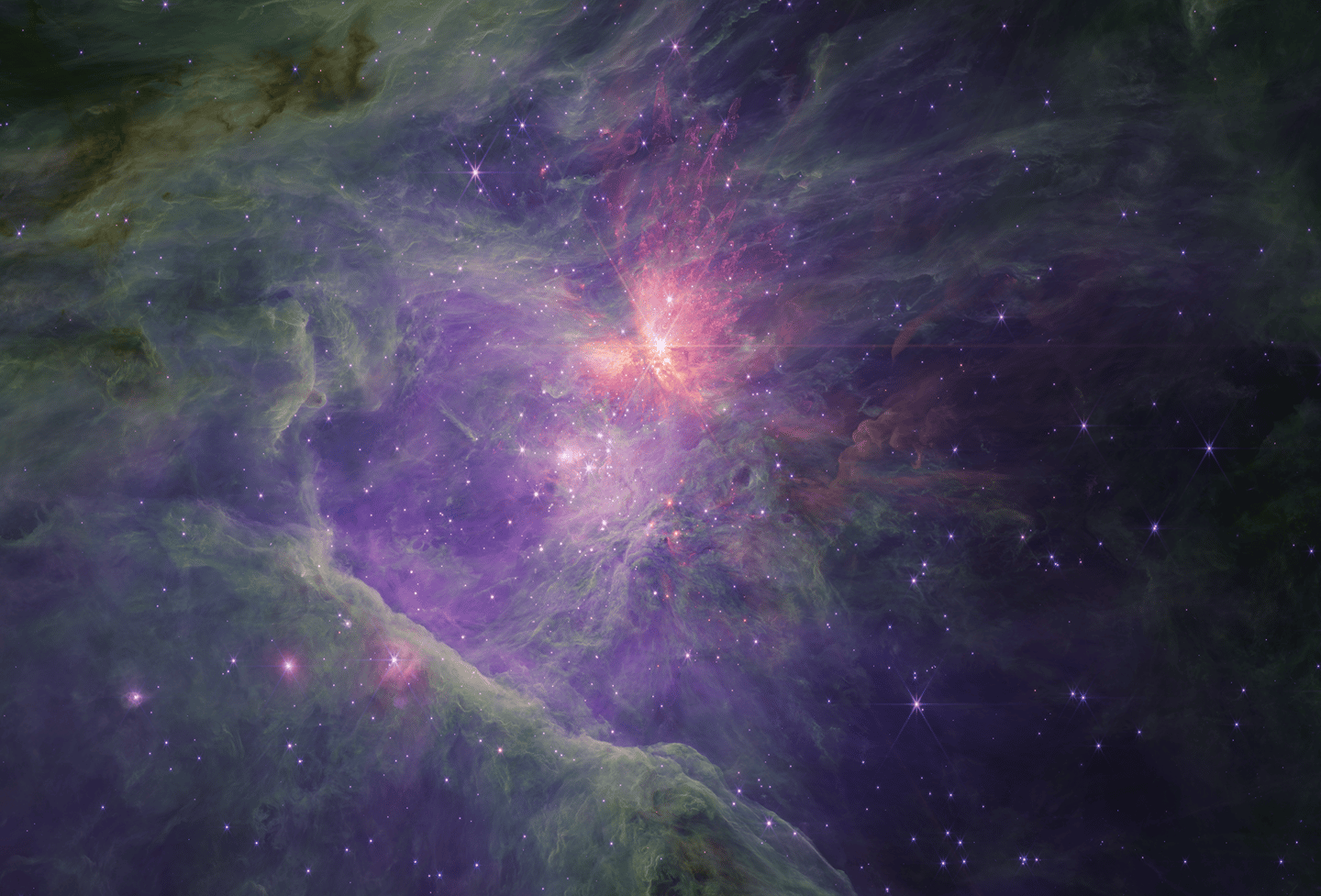Cosmos M42
Hiding within new images of a nebula captured by the James Webb Space Telescope, astronomers have made a puzzling discovery – dozens of Jupiter-sized objects that defy explanation. The discovery was made in Messier 42, the bright nebula located within the constellation of Orion. James Webb, being an infrared telescope, is perfect for peering through big clouds of dust and gas such as nebulae, so astronomers trained it on this one to see what they could find.
Maps of the region are now fully explorable in ESASky, the European Space Agency’s online astronomical data visualization system. Scientists and general users alike can scroll around high-definition images of the night sky, view it in different wavelengths of light, and zoom way in on any random spot to see what’s there.
The expected (but no less spectacular) finds included still-forming protostars and young stars with dusty disks around them, as well as incredible structures carved into the nebula through the interplay between radiation and chemistry.
